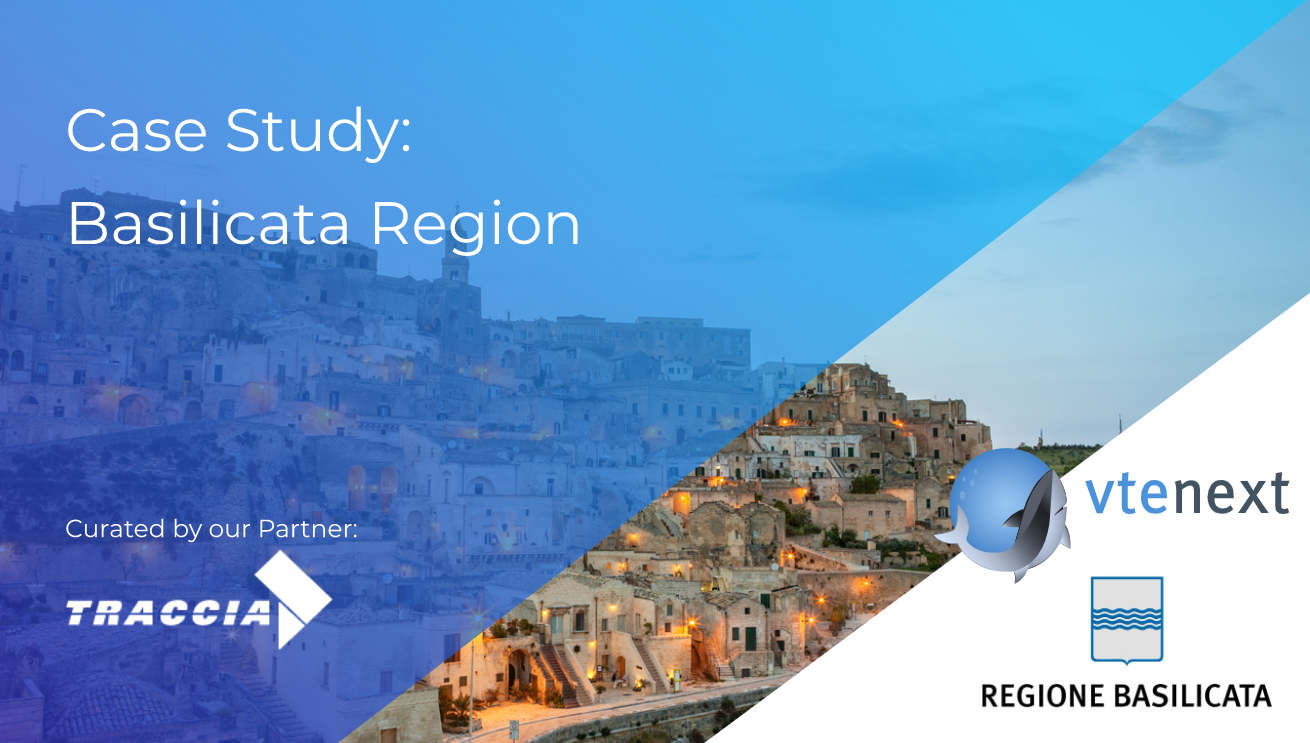How to digitize the Public Sector improving the Customer Service through vtenext
Basilicata Region, with our partner Cooperativa EDP La Traccia’s support, has been able to digitize and automate, through vtenext, the technical assistance ticketing process, the GDPR management and the periodical communications sending, increasing the customer and employees satisfaction, creating also a unique and centralized database updated in real time.
Entity: Basilicata Region
Industry: Public Sector
Headquarter: Basilicata
Employees: 1600
The initial needs
As most of the government offices, Basilicata Region has several suppliers, chosen through periodical public tenders, to manage the different areas, as the technical assistance one.
The administration already has a digital system able to redirect the technical assistance tickets to the assigned users, mainly to external suppliers.
The previous software didn’t have functional problems, but it was limited only to the ticket management, without the possibility to have a history of the ticket progress or a unique portal with all the requests grouped, features particularly important for the system evolution.
For these reasons, Basilicata Region was searching for a more adaptable tool, able to integrate with the other software they were using to create a single centralized system where to share and automate the internal and external processes management related to the technical assistance.

The implemented project
The synergy with Cooperativa EDP La Traccia, official vtenext partner, able to help companies with their digital transformation projects, and the forward-looking mindset of the Digital Administration office, brought the entity to develop a successful project, which involved different departments and offices. The new project has been able to fulfil also the new GDPR management needs and the necessity of sending customized newsletters.
The analyzed features have been:
- Multichannel management of internal and external technical assistance requests
- Suppliers activities monitoring
- Devices monitoring and management (PC, Tablets…)
- Automated processes implementation
- GDPR friendly data management
- Internal and external communications sending
Let’s see in detail:
One of the hardest challenges was to group in a single platform both internal and external requests coming from the different channels. After a deep analysis four main channels have been identified:
- Dedicated portal for public employees and citizens. Within the portal users can view shared documents and open tickets with the support of a guided wizard which helps the user to understand to which area redirect the request. Citizens can create their account through their SPID or through the creation of their user within the Region’s database. For the employees, instead, an account is automatically created thanks to the integration with the personnel information system and the Attribute Authority.
- Email. Each work group has a specific folder and, thanks to vtenext’s mail converter feature, emails are automatically converted into tickets and sent to the assigned user.
- Call center. In this case the operator manually creates a ticket.
- Home page and vtenext access for the collaborators. Through vtenext’s home page collaborators can view each assistance area with the related queues. Logging into the system they will be able to manage queues they are assigned to, managing the tickets and planning activities, monitoring also the ticket history and the characteristics of each single collaborator or citizen.
In the Email and Call Center cases the user will receive a confirmation email, with the credentials to log into the dedicated portal to monitor the ticket status and to give additional information, if necessary.
To facilitate the communication between users and technicians (both internal and external), and to guarantee a fast service it has also been implemented an automatic email system to inform users about ticket progress. They implemented also standard parameters for the tickets took in charge and requests solving (SLA).
Then, depending on the area involved, to facilitate the software use, each operator will have available custom fields and the back office will be able to link correlated requests to improve the history accessibility.
Another aspect successfully managed is the supplier’s activity monitoring.
At the moment each supplier subscribes to a contract (managed by an integrated external system), to which all the assistance and development projects are linked. To each one of these are going to be linked also every ticket with all the details of the intervention.
Projects are also associated with the different Service Level Agreements, subscribed by the suppliers, and any possible requirements.
Each kind of operator is associated with his cost per hour and, thanks to this feature, it is easy to monitor each activity with its cost.
The referent of the Administration Contract, after having validated the activities, exports and signs the report attached to the SAL liquidation administrative measure.
One of the most important activities related to internal assistance is the need for the tracking of hardware devices.
For this reason, it has been developed a web service which checks the devices inventory to which will be linked the assistance ticket to facilitate its resolution.
The technician, through a couple of clicks, is able to know which devices are assigned to a user.
At the same time he is able to manage the took in charge of the device, avoiding any loss of time.
Thanks to the experience of the professionals involved in the Administration’s workflow analysis, with the integrated Business Process Manager Engine (BPMN), it has been implemented clear workflows for the main internal processes.
The following step after the digitization has been the activities automation. An example is the general projects approval. Once a project is inserted into the system, it will be automatically assigned to the referent, who will be able to approve it or not with a simple click. Then, his feedback will be communicated to the interested users.
Another important feature is the data management made in conformance with the EU directives (UE 679/2016 – GDPR).
With DPO’s and administration’s help, and through vtenext it has been implemented the controller’s and the processor’s centralized and digitized registers, as provided for in article 30 of GDPR. To facilitate the process it has been realized a guided process, which helps the user in each important aspect. Each assigned, through the platform, can link to each processing all the related documentation creating a processing dossier.
Through specific reports it is possible to view and monitor the activity within the processing register, both for the controller and the processor.
Communication is really important to build a stable and productive organization, for this reason Basilicata Region chose vtenext to send newsletters to external and internal collaborators, citizens and suppliers, making possible an easy information interchange.
A CRM for the Public Sector: main benefits
- Improved productivity thanks to the accessibility of every updated information. vtenext is now the main communication tool in which all data are grouped and saved.
- Fast tickets’ took in charge. Each ticket is assigned, monitored and solved respecting the SLA times.
- Shared and optimized digital processes. Now, users who want to send a ticket request, know exactly how to do it and are able to monitor it anytime.
- No more paper documents, Excel and times reduction.
- Customer satisfaction improved. Now, users can easily and fastly get in touch with Basilicata Region, thanks to a smart, trustworthy and intuitive CRM.
A glimpse into the future
Basilicata Region’s Case Study, highlights how digitization and the adoption of clear and shared processes applied through a good CRM solution, improve the Customer Satisfaction creating value for the company and the customers, both internal and external.
